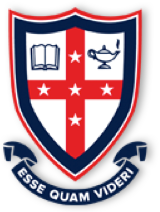Brian Dunlop, Artist and Art Teacher
Brian Dunlop (1938–2009) was one of the many influenced by esteemed Australian artist Justin O’Brien, who was the Art Master at Cranbrook from 1946 to 1967 (see a profile on him here). Brian came to Cranbrook to teach art in the Pre-School in 1962. He had been awarded a scholarship to study at the National Art School, and he was chosen for the Le Gay Brereton Prize for Drawing in 1958.
Finishing his college studies in 1959, he had then travelled overseas. He visited Europe before returning home to Australia, where he took up teaching at Cranbrook. He would ultimately stay a year. That year, 1962, was also the last year of Gethyn Hewan’s time as Headmaster, falling within a period of prosperity for the school, which built on the advancements of the past while extending its sporting, cultural and academic successes.1
Brian Dunlop had forged a friendship with Justin O’Brien following their time in art school. They continued to develop their bond at Cranbrook, which would ultimately last a lifetime.2 They lived and worked together in Rome at different times during the 1960s and succeeding decades, at times also with much-admired Australian artist Jeffrey Smart. This fellowship between staff members at Cranbrook was in part a consequence of the close relationship developed between Justin O'Brien and Headmaster Brian Hone, as well as other members of the Common Room, during the 1950s and the development of an appreciation of the visual arts.3
Despite being happy at Cranbrook, Brian later described his time there as a “difficult period” for him as an artist. He felt he had lost his way, having become influenced "in a poor way" by the French Post-Impressionist painter Pierre Bonnard during his recent travels in Europe. He was determined to rectify the problem in his artistic development, and so he left Cranbrook at the end of 1962 and returned to Europe to “sort myself out".4
While in Europe, Brian was amongst other things a set painter in Rome, producing a replica of the Sistine Chapel in 1963 for a Charlton Heston film, The Agony and the Ecstasy.5 He would later return to teaching art in Sydney during the 1970s, before becoming an artist in residence in 1980 at the University of Melbourne. He devoted himself to his own art, developing a reputation as a portrait painter before moving into landscapes and still life, which occupied him for the remainder of his life.6 He won the competitive and sought-after Sulman Prize in 1980.
It has been said that Brian's “careful compositions, where people are defined by their context, made him especially popular as a portrait painter”.7 His best known portrait was the official Victorian Sesquicentenary portrait of Queen Elizabeth II, painted in London in 1984. In the painting, the Queen wears "a bright yellow dress, sitting in front of a white panelled door, balanced by an intricate golden patterned wallpaper”.8 Brian would later distance himself from portraiture, preferring other styles and subjects, but what made them exceptional was what would also make his landscapes and still life paintings distinct: an attention both to the form and light of spaces.
He continued to paint and to exhibit his work up until his death. Examples of his work now hang in many leading Australian galleries, including the National Portrait Gallery in Canberra.
- 1. David Thomas and Mark McAndrew, Born in the Hour of Victory, Cranbrook School, 1918-1993 (Sydney: Playright Publishing, 1998), p. 123.
- 2. Brian Dunlop described himself as having become friends with Justin O’Brien and Jeffrey Smart and meeting them later in Rome, also living with Justin in the late 1960s: “James Gleeson Interviews: Brian Dunlop”, National Gallery of Australia, pp. 5, 9, 11, accessed online at https://nga.gov.au/Research/Gleeson/pdf/Dunlop.pdf, extracted 12 October 2017.
- 3. Thomas and McAndrew, Born in the Hour of Victory, op. cit., p. 76.
- 4. “James Gleeson Interviews: Brian Dunlop", op. cit., pp. 4–5.
- 5. Ibid, p. 3.
- 6. Joanna Mendelssohn, “Brian Dunlop was a classical painter in Western tradition”, The Australian, 18 December 2009.
- 7. Joanna Mendelssohn, biography at Design and Art Australia Online, accessed online at https://www.daao.org.au/bio/brian-dunlop/biography/, extracted 12 October 2017.
- 8. Ibid.

